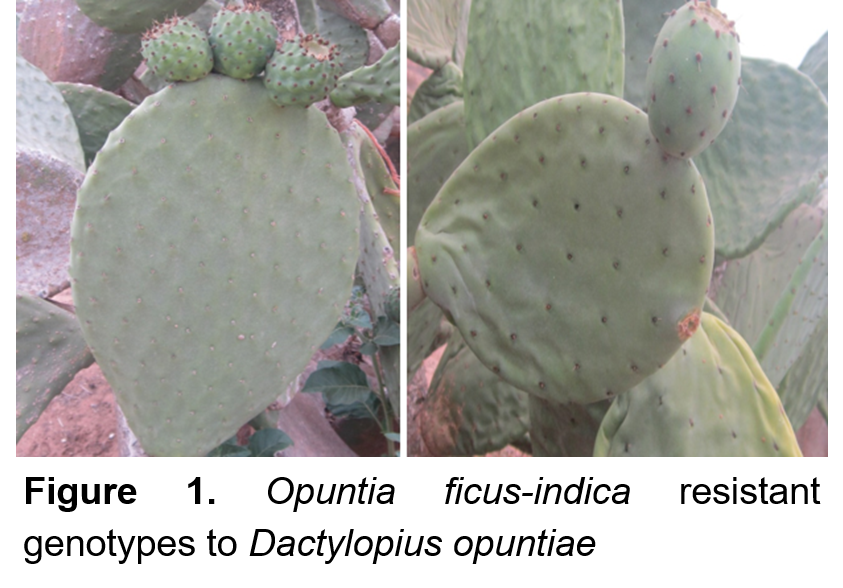Genetic relations among Moroccan Opuntia genotypes with different degrees of resistance to Dactylopius opuntiae
DOI:
https://doi.org/10.56890/jpacd.v24i.480Keywords:
Cactus pear genotypes, tolerance, false carmine cochineal, genetic diversity, SSR markersAbstract
Genetic diversity and relationship among a set of 18 cactus pear genotypes, with different degrees of resistance to cochineal scale insect (Dactylopius opuntiae), was estimated using eight simple sequence repeat (SSR) markers. The genotypes used belong to four Opuntia species (O. engelmanii, O. ficus indica, O. robusta, and o. dillenii). The analysis revealed a total number of 56 alleles (Mean = 7) and an average genetic diversity index of 0.76 with genetic distances ranging from 0.00 to 1.00 at eight microsatellite loci in 18 Moroccan cactus pear genotypes. All microsatellites used were found to be highly informative, with mean polymorphic information content (PIC) estimated at 0.72. Genetic relationship estimated using the neighbor-joining (NJ) method and the principal coordinate analysis (PCoA), showed that the 18 genotypes were successfully assigned to four clusters, separated according to their taxonomy distribution and their levels of resistance to D. opuntiae. The results of this study demonstrated that the Moroccan cactus pear genotypes evaluated are highly divergent and that these genotypes will be useful for future crossing programs to improve the genetic diversity in Opuntia for resistance to D. opuntiae.
Publication Facts
Reviewer profiles N/A
Author statements
Indexed in
- Academic society
- Journal of the Professional Association for Cactus Development
- Publisher
- Professional Association for Cactus Development




